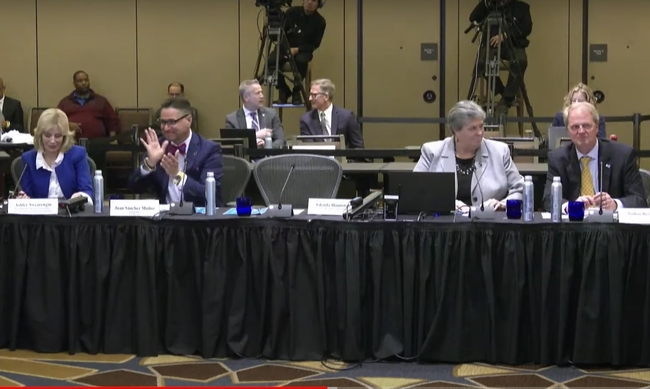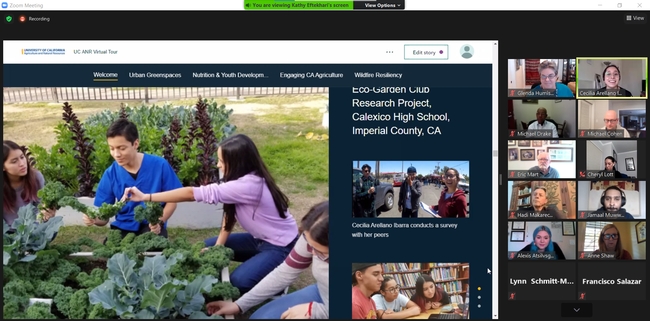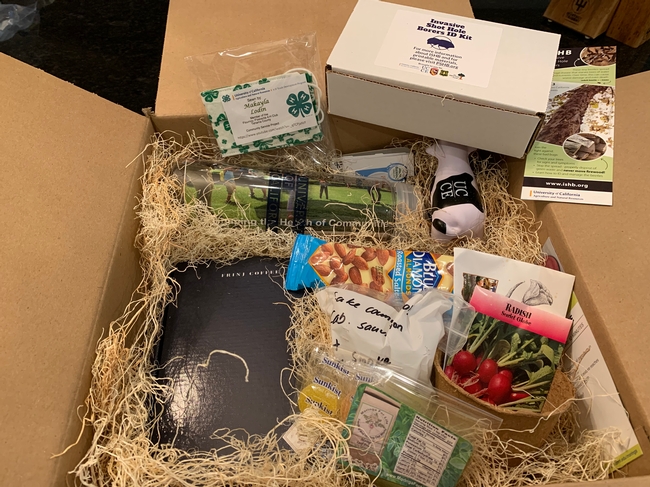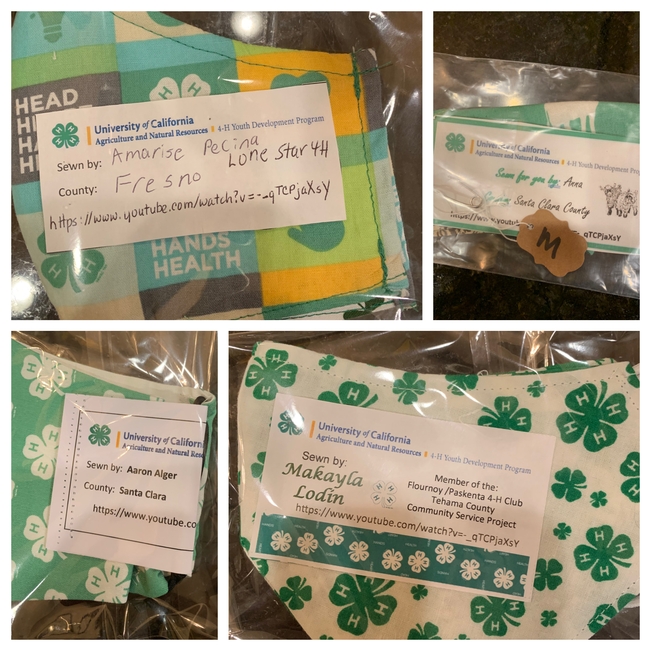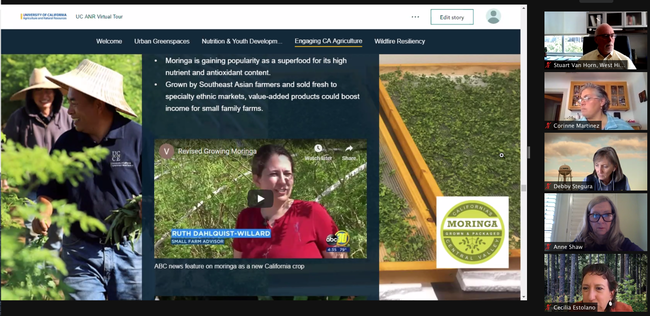Posts Tagged: UC regents
Central Valley agrifood initiative F3 receives major boost
The Fresno-Merced Future of Food Innovation Initiative (F3) – of which UC ANR is an anchor institution – took a big step forward during the UC Regents meeting May 18.
The Regents unanimously approved the formation of F3 Innovate – a new 501(c)(3) nonprofit that will raise funds for the partnership initiative that also includes the Central Valley Community Foundation (CVCF), California Department of Food and Agriculture, UC Merced and CSU Fresno.
Largely funded by a $65 million Build Back Better grant from the U.S. Economic Development Administration, F3 aims to advance innovation and entrepreneurship in agrifood technology, strengthen food systems, bolster local and regional economies, and bring greater prosperity to the San Joaquin Valley and beyond.
The new F3 Innovate nonprofit will focus on agrifood systems research and commercialization, services for micro-enterprises and small businesses in under-resourced communities, ag-tech innovation seed funding, and building a talent pipeline to sustain these efforts.
“This 501(c)(3) is critical to all of that, because it really lets us bring together the public and private partners, and ensures that broader stakeholder participation and benefit,” said Glenda Humiston, UC vice president for agriculture and natural resources, during her presentation to the Regents (view recording of the meeting).
UC Merced Chancellor Juan Sánchez Muñoz and CVCF President and CEO Ashley Swearengin also spoke passionately during the meeting about the need to form the nonprofit as a key connector and catalyst for the F3 initiative.
F3 – and the new F3 Innovate – will continue to take shape through the work of Gabe Youtsey, UC ANR chief innovation officer; Josh Viers, associate dean for research of UC Merced's School of Engineering; and many other academics and staff across UC ANR and UC.
"Establishing F3 Innovate as a 501(c)(3) nonprofit organization is a strategic move designed to unlock and accelerate agriculture technology from lab to market. It will pave the way for a wider range of collaboration opportunities between the UC and industry, and ensure the inclusion and representation of all our stakeholders, from small and socially disadvantaged farmers to startups and corporates," said Youtsey, who is also founder of The VINE, UC ANR's Innovation & Entrepreneurship program that is co-leading F3.
"The UC Regents were enthusiastic about this partnership as it aligns perfectly with our mission of transforming cutting-edge agricultural research into practical, market-ready solutions while doing the hard work of engaging our local workers, communities and farmers to adopt these new technologies," Youtsey added. "It enables us to foster deep and meaningful collaborative relationships with industry partners, advancing technology commercialization that is inclusive and truly beneficial to all involved."
President Drake, regents get a taste of ANR on virtual tour
UC President Michael Drake and UC regents were treated to virtual tours of UC ANR similar to the tour taken by legislators on Nov. 20.
On Dec. 2, UC regents Charlene Zettel, Cecilia Estolano and Richard Lieb, alumni regent Debby Stegura and Anne Shaw, secretary to the regents, took a 90-minute tour via Zoom. They were joined by members of the UC President's Advisory Commission Corinne Martinez, Connie Stewart, Paula Daniels and Stuart Van Horn.
On Dec. 8, President Drake was joined by UC regents Michael Cohen and Hadi Makarechian, student regent Jamaal Muwwakkil, alumni regent Eric Mart, regent-designate Cheryl Lott and student regent-designate Alexis Atsilvsgi Zaragoza.
In introducing the virtual tour, VP Glenda Humiston explained that UC ANR does much more than they would see that day. “This is just to pique your interest,” she said.
Before the tour, “learning boxes” containing samples of almonds, smoke-tainted wine, moringa powder, California grown coffee and many other items related to the presentations were shipped to the participants to give them a more interactive experience.
For example, while discussing the impact of wildfires, Stephanie Larson, livestock range management advisor and director of UCCE in Sonoma County, invited the participants to reach into the learning box for the two small wine samples to taste first the regular wine, then the wine made from grapes exposed to wildfire smoke to see if they could detect the smoke taint. Another popular item was the Shot Hole Borer ID kit which included a real (dead) shot hole borer in a vial with a magnifying glass and damaged wood sample.
During the presentations, tour participants were encouraged to write their questions in the Chat feature of Zoom and presenters followed up with information. They also engaged with questions and conversation at points during the tour.
The regents said they were very impressed with the work that UC ANR does. They urged UC ANR leadership to tell more people about UC ANR programs and let urban legislators know that the programs affect all 40 million Californians, not just rural communities.
At the end of the tour, Humiston said, “This is just the tip of the iceberg. There is so much more research going on.” She invited them to see more of UC ANR on actual field tours when coronavirus restrictions ease.
President Drake said he liked seeing the connection between globally important issues such as wildfire, climate and carbon soil sequestration and UCANR research. “It's good to know we're actively involved. Thank you for your hard work and contributions.”
Presenters included Missy Gable, director of the UC Master Gardener Program; Jim Farrar, director of the Integrated Pest Management Program; Greg Ira, director of the California Naturalist Program; Lorene Ritchie, director of the Nutrition Policy Institute; Kamal Khaira, director of CalFresh Healthy Living, UC; Cecilia Arellano Ibarra, former CalFresh Healthy Living, UC Youth-led Participatory Action Research participant and UC Davis sophomore; Lynn Schmitt-McQuitty, director of the 4-H Youth Development Program; Alexis Peña, senior at Buhach Colony high school and past Juntos 4-H program participant; Francisco Salazar, UC Merced student and past Juntos participant; Jhalendra Rijal, area IPM advisor; Ashraf El-Kereamy, UCCE specialist and director of Lindcove Research and Extension Center; Ruth Dahlquist-Willard, small farms advisor; Mike Mellano, third-generation flower grower in San Diego County, UC President's Advisory Commission member and California representative for the Council for Agricultural Research, Extension and Teaching; Betsy Karle, dairy advisor; Yana Valachovic, forestry advisor and UCCE director in Humboldt and Del Norte counties; and Larson.
Behind the scenes, many people contributed to the tour's success.
The story map framework of the virtual tour was introduced and supported by Shane Feirer and Robert Johnson of the Informatics and GIS Program, then Kathy Eftekhari, chief of staff and Anne Megaro, director of government and community relations, created the story map working with the 16 presenters to develop content. Ricardo Vela, manager of News and Information Outreach in Spanish edited most of the videos. Many people helped to assemble and ship learning box items, including 4-H members who sewed more than 40 COVID-19 masks as samples of their work in civic engagement.
A self-guided version of the virtual tour will be posted online in the new year.

